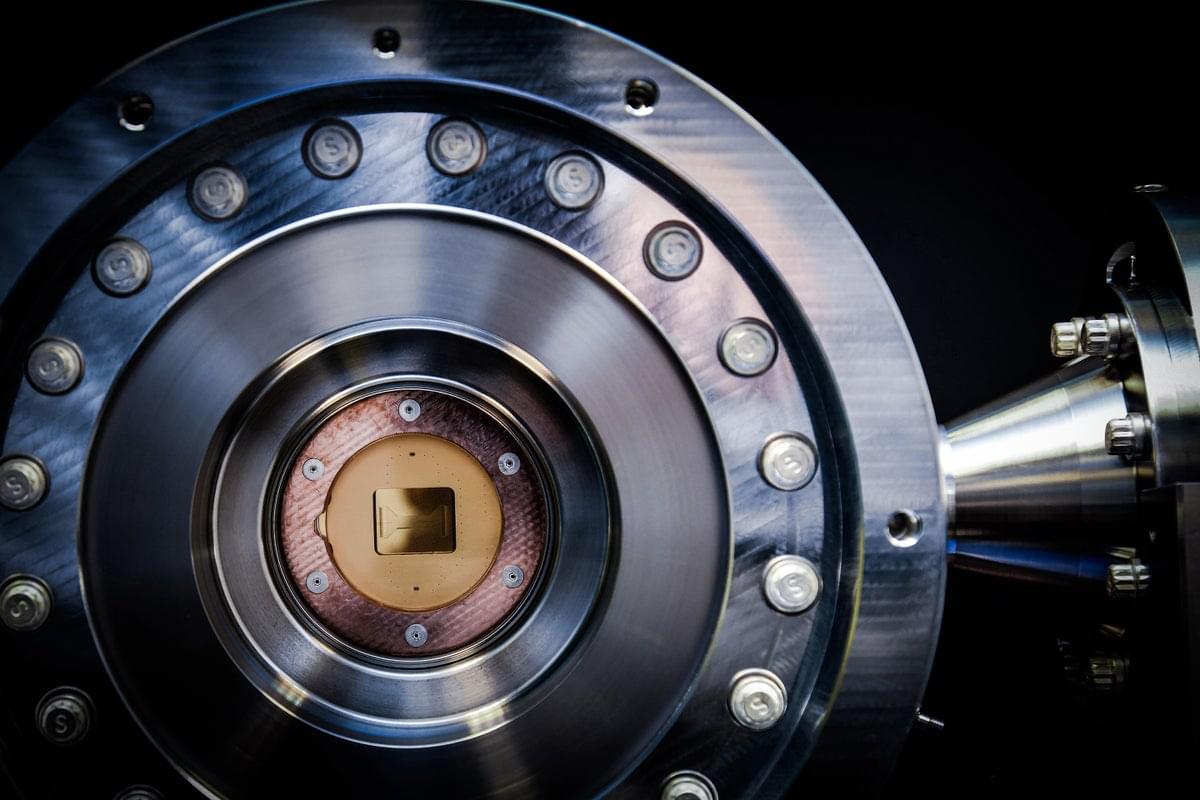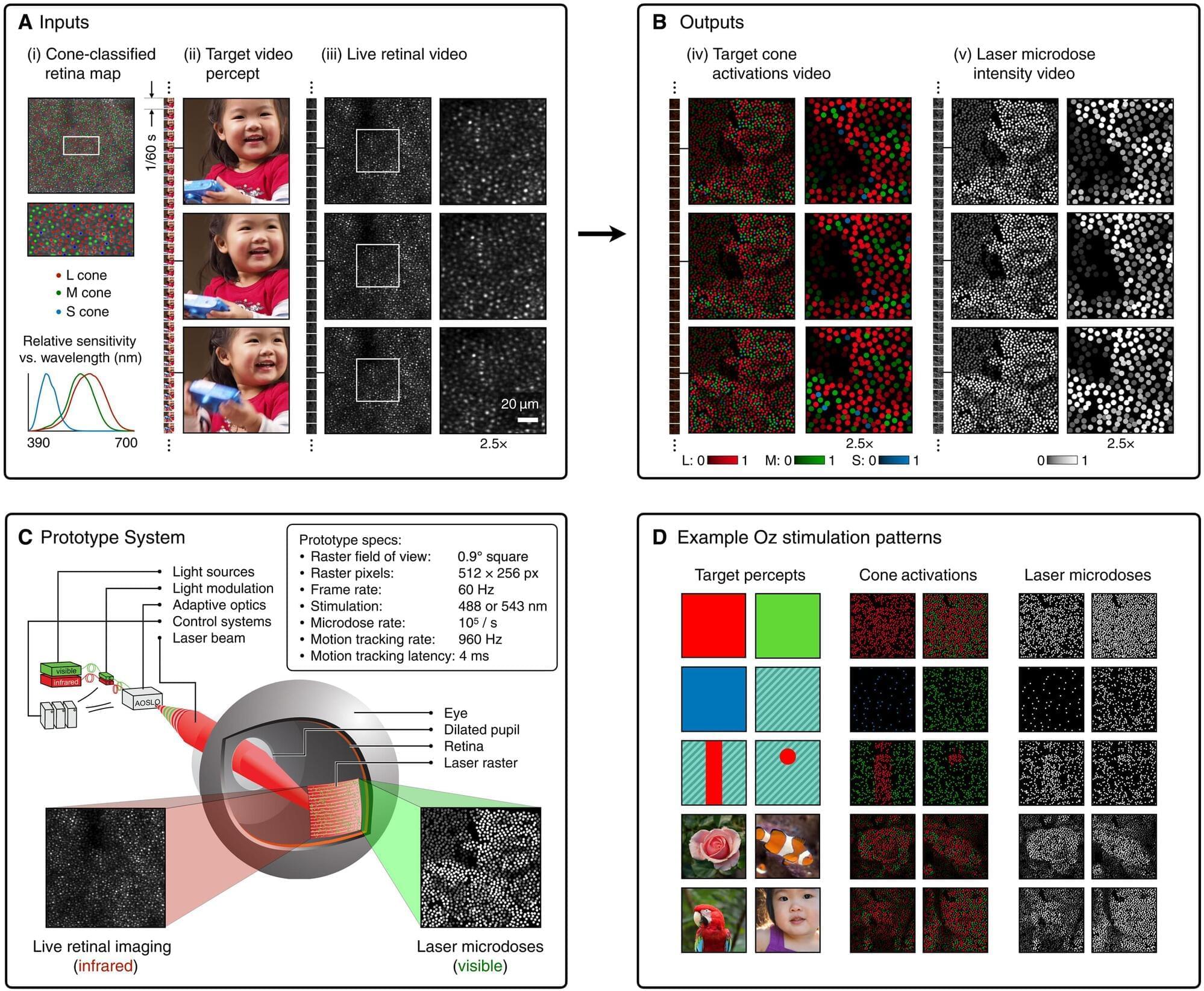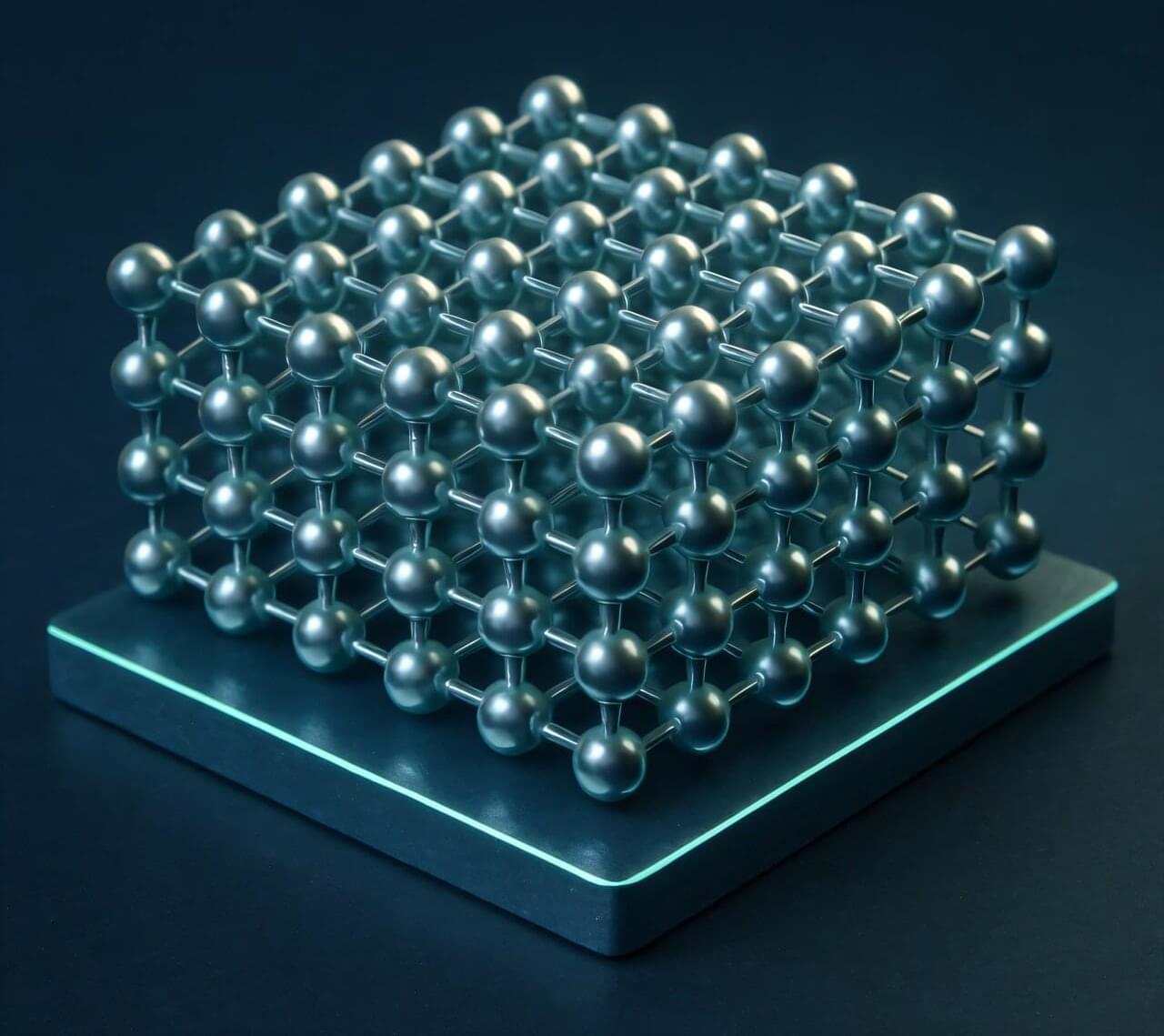Quantinuum’s 56-bit trapped-ion computer has succeeded in demonstrating randomness in quantum circuits to establish secure, private connections



A team of engineers, computer scientists and ophthalmologists at the University of California, Berkeley, working with a pair of colleagues at the University of Washington, has developed a technique for stimulating the retina that allows people to see a color not normally seen by humans.
In their study published in the journal Science Advances, the group identified certain photoreceptors in volunteers and then stimulated them to allow those volunteers to see the unique color, which the team has named “olo.”
The human eye has two types of photoreceptors, rods and cones. Rods are used mostly to see in dark conditions. Cones are further divided into long, medium and short cones (L, M and S) depending on which wavelength of light they process most efficiently. Prior research has shown that there is some overlap in light processing between the cones, and the researchers wondered what would happen if light were only processed by one type, such as M.
There is no “outside.” No other system. The universe is not on a computer. It is the computer. It is the thing performing the computation. It doesn’t need anyone watching it. It doesn’t need a server farm or a control panel. It simply is what it is: a system that processes information according to its own rules.
In other words, when we talk about the universe as a quantum computer, we’re not saying it’s pretending to be real. We’re saying this is what real is.
1:19 Reality as Code.
8:35 What Is a Quantum Computer, Anyway?
13:37 Evidence and Models That Support the Quantum Universe Idea.
20:04 What Would It Mean If the Universe Is a Quantum Computer?
26:14 Could We Simulate the Universe from Within It?
32:37 The Dark Implications.
39:53 Is This the Best Description We’ll Ever Get?


A research team at HZB has developed a clever technique to read quantum spin states in diamonds using electrical signals instead of light. This breakthrough could dramatically simplify quantum sensors and computing hardware.
Diamonds that contain specific optically active defects, known as color centers, can serve as highly sensitive sensors or as qubits for quantum computers, with quantum information stored in their electron spin states. Traditionally, reading these spin states requires optical methods, which are often complex and difficult to implement. Now, researchers at HZB have developed a more streamlined approach: using photovoltage to detect the spin states of individual defects. This method could pave the way for much smaller and more compact quantum sensors.
Harnessing Defects for Spin States.

Researchers in China have achieved a major leap in quantum photonics by generating a massive 60-mode entangled cluster state directly on a chip using optical microresonators.
By leveraging a deterministic, continuous-variable approach and a multiple-laser pump technique, they overcame traditional limitations in scalability. The team confirmed high-quality entanglement using advanced detection methods, paving the way for powerful quantum technologies like chip-based computers, secure communications, and cutting-edge sensors.
Breakthrough in On-Chip Quantum Entanglement.

Consumer electronic devices are made from materials that we have been using for more than 60 years, mainly silicon, germanium and copper. Why have semiconductor electronics become increasingly fast over this time?
I would argue that this is due to miniaturization, or the ability to stack an increasingly large number of transistors in a dense integrated circuit (microchip). Some may argue that we are starting to reach limits in that miniaturization, as thin films approach a thickness of just about 10 nanometers, or even lower.
These nearly two-dimensional (2D) materials could be used to build the next-generation electronics. However, as electronic materials like silicon are miniaturized, they become less energy efficient.

Scientists from Mass General Brigham and Beth Israel Deaconess Medical Center have developed a novel gene editing tool called STITCHR. Unlike traditional CRISPR, STITCHR inserts entire genes at precise locations, minimizing unintended mutations. This gene editing tool simplifies use and offers potential as a one-time treatment for genetic disorders.
The technology uses retrotransposons, naturally occurring “jumping genes” found in all eukaryotic organisms, which can move and integrate into genomes. Using computational screening, the researchers identified and reprogrammed a specific retrotransposon to work with the nickase enzyme from CRISPR, forming the complete STITCHR system that allows a precise, seamless gene insertion into the genome.
STITCHR offers the potential to replace or supplement entire genes, creating a more universal treatment option for various genetic diseases. The research team is now working to improve its efficiency and move it toward clinical use. Their study, published in Nature, highlights how insights from basic cellular biology can drive innovation in genetic medicine and lead to new therapeutic tools.
🚨 Huawei’s NEW chip breakthrough is ROCKING the tech world! 😱 China’s tech takeover is here, and it’s starting with Huawei’s game-changing chip! 🌍 From outsmarting sanctions to rivaling Apple and Qualcomm, this is the #HuaweiChip story you NEED to know! Join REVO NOW to uncover how this chip is reshaping the future! 💻🔥 Hit play now!
🔥 Why You Can’t Miss This:
Discover Huawei’s secret to defying odds with a world-class chip!
Explore what this means for global tech in 2025!
Get the truth on China’s tech rise and YOUR future!
👉 Join REVO NOW! Smash that like, subscribe, and share to stay ahead on tech news! 🔔 Comment below: Is Huawei’s chip a win or a worry? 🤔
#HuaweiTech #ChinaTech #TechTakeover #GlobalTech #Tech2025
🌍 JOIN THE CONVERSATION:
Follow us on social media for exclusive updates and behind-the-scenes insights:
📸 Instagram: instagram.com/techrevonow.
🐦 Facebook: facebook.com/profile.php?id=61555176770936
🌐 TikTok: tiktok.com/@revonow.
🚀 Telegram: t.me/ whsccFVnxKY5YWU0.

I’m writing this from a laptop that’s stalling and refusing to switch between tabs because it’s gotten too warm in the early Indian summer. It’s not like I’m running a hectic workload of video and audio editing tools and multiple browsers at once: this old machine just can’t move heat away from the processor and other internals quickly enough.
That results in throttling, or reducing the clock speed at high temperatures, in order to prevent overheating and damage to the internal components. But a new finding from the University of Virginia School of Engineering and Applied Science could make that a thing of the past – with crystals.
When electronic components like the processor in your laptop are working at full tilt, they can get pretty hot. The same can be said for chips in a range of other devices, and even batteries in electric cars. Now, if these components are squashed into tight spaces, you’re going to see heat build up there and take a long time to dissipate.